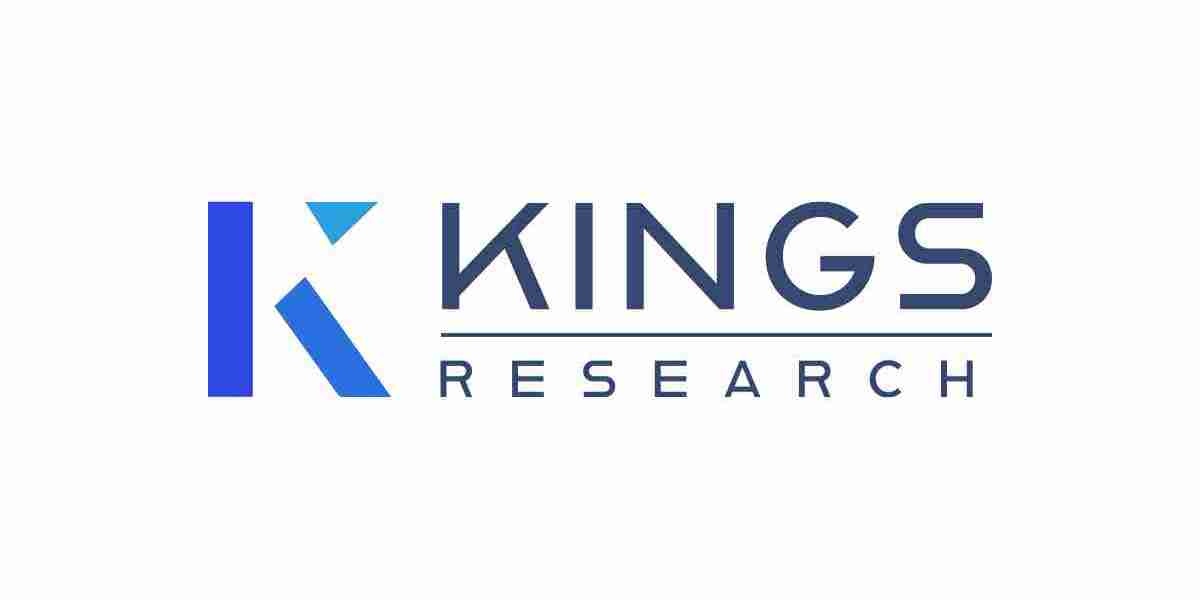Market Overview
Glamping (glamorous camping) has evolved from a niche experiential lodging concept into a mainstream segment within tourism and hospitality, bridging the gap between nature immersion and premium comfort. The global glamping market was valued at USD 3,206.8 million in 2023, and is projected to reach USD 7,931.3 million by 2031, growing at a compound annual growth rate (CAGR) of 12.17 % over the 2024–2031 period.
At its core, glamping offers consumers the opportunity to enjoy the outdoors—forest, beach, mountains, desert, wilderness—while also benefiting from elevated amenities such as comfortable beds, climate control, private bathrooms, quality furnishings, and often curated leisure experiences. It essentially reimagines camping in a luxurious format, catering to travelers who want connection with nature but are unwilling to forgo comfort. Operators may deploy safari tents, pods, cabins, treehouses, domes, and tiny-home style lodgings, often in scenic or remote settings.
This growth trajectory reflects a shifting consumer mindset toward experience-based travel, increasing disposable incomes, a rise in eco-travel consciousness, and a desire for unique, Instagrammable stays. As traditional hospitality becomes more commoditized, glamping distinguishes itself through authenticity, novelty, and emotional appeal.
Key Trends Shaping the Glamping Market
Several prominent trends are influencing how the glamping market develops, how operators compete, and how consumers engage:
1. Demand for Experiential & Immersive Travel
Travelers – especially millennials and Gen Z – are placing greater value on experiences over material goods. They seek stays that tell a story, allow reconnection with nature, and offer Instagram-worthy moments. Glamping fits that niche perfectly: dramatic tents, treehouses, and pods in scenic backdrops become part of the attraction itself.
2. Sustainability and Eco-Conscious Design
As environmental concerns become central to consumer decisions, glamping operators are integrating sustainable practices: solar power, rainwater harvesting, off-grid energy, biodegradable materials, minimal disturbance to ecology, and low-impact construction. This not only appeals to eco-minded travelers, but is increasingly mandated by local regulations in many jurisdictions.
3. Technology & Smart Amenities
To satisfy modern expectations, glamping sites are embedding smart features: IoT sensors, remote controls for lighting and climate, app-based check-in/out, occupancy monitoring, Wi-Fi connectivity, and digital guest services. Some premium sites might offer augmented reality tours, digital concierge, or even immersive nature apps to augment guest experiences.
4. Hybrid Models & Themed Stays
Operators are experimenting with hybrid models: “hotel-tent” models combining resort amenities with outdoor flair; wellness glamping retreats emphasizing spa, yoga, and detox; romance or honeymoon-oriented stays; adventure packages (trekking, kayaking, wildlife) bundled with lodging; glamping for corporate retreats and group events. The more unique and tailored the offering, the stronger the market differentiation.
5. Rising Booking via Digital Platforms
Consumers increasingly favor booking glamping stays via digital travel platforms, OTA (online travel agencies), or direct mobile apps. Transparent reviews, high-resolution images, virtual tours, and social proof drive bookings. Operators that integrate well with booking platforms and offer seamless digital experiences are more likely to capture demand.
6. Off-Peak & All-Season Adaptations
One challenge of glamping is seasonality (weather, tourism cycles). Forward-looking operators are designing all-season structures (insulated domes, heated pods, retractable roofs) and diversifying locations (higher elevation, tropical) to reduce idle seasons. Some also run complementary programming (festivals, wellness retreats) during shoulder seasons.
Demand Drivers
The rising adoption of glamping is propelled by multiple demand-side factors:
Changing Traveler Preferences: Many modern travelers want escapes that are not “just another hotel stay.” Glamping offers a balance of novelty, serenity, and comfort.
Rising Disposable Income & Middle Class Growth: In emerging markets especially, more people have discretionary income to spend on premium leisure stays.
Post-Pandemic Travel Behavior: After COVID disruptions, many travelers prefer spacious, nature-based, low-density stays rather than crowded resorts. Glamping offers a compelling middle path.
Social Media & Influencer Marketing: Stunning visuals of luxury tents, treehouses overlooking valleys, or domes under a starry sky go viral. Travelers inspired by social media often try glamping for the “photo moment.”
Growth of Domestic & Regional Tourism: With travel restrictions or high costs of international travel, many travelers are exploring closer-to-home getaways. Glamping in national parks or rural settings caters well to domestic demand.
Desire for Wellness & Mindful Travel: Wellness travel is booming. Many glamping sites package yoga, forest bathing, spa, biodome retreats, and meditation—all very complementary to nature-based stays.
Market Dynamics & Challenges
While the glamping market is promising, it also faces various structural and operational challenges:
High Capital & Development Costs
Building luxury outdoor accommodation—tents with foundations, climate control, plumbing, power, durable materials—is expensive. Land acquisition, infrastructure (roads, utilities), permits, and interior furnishings add up. Many smaller operators struggle to raise funding.Regulatory and Zoning Hurdles
Glamping often exists at the interface of rural land, conservation zones, or protected areas. Local zoning rules, building codes, environmental impact assessments, and permit processes vary widely and may slow or constrain development.Seasonality and Occupancy Risks
In many regions, weather, monsoon, winter snow, or rainy seasons reduce viability. Low occupancy during off-peak months can pressure profitability.Logistics & Infrastructure Constraints
Remote locations often lack roads, electricity, water, or broadband. Operators must invest in off-grid solutions, which increase costs and complexity.Maintaining Quality & Guest Expectations
Guests expect “luxury” standards—cleanliness, comfort, amenities—despite being in rugged locations. Ensuring reliability of power, water, HVAC, and services in wilderness settings is nontrivial.Competition & Differentiation
The barrier to entry for small luxury tent setups is relatively low. Many new players enter, increasing fragmentation. Standing out (theme, location, service, branding) is critical to avoid commoditization.
Market Segmentation
To understand where growth and competition lie, the glamping market is commonly segmented across key axes:
1. By Accommodation Type
Typical categories include:
Cabins & pods
Tents (luxury tents, safari tents)
Treehouses
Yurts / domes
Tiny homes or modular structures
Others (e.g. converted vehicles, bubble tents)
Among these, cabins & pods often hold a leading share due to their year-round appeal, structural robustness, and higher perceived comfort.
2. By Age Group / Consumer Demographic
Segments such as below 18 (family), 18–35, 35–50, above 50 are used. The 18–35 cohort often drives early adoption due to their inclination for experiential travel, social media exposure, and flexibility.
3. By Booking Mode
Online (through OTAs, platforms, apps)
Offline (through direct contact, travel agents, walk-ins)
Online booking is growing faster given digital penetration, transparency, and ease of use.
4. By Application / Use Case
Couples / Romance getaways
Families / Group vacations
Wellness / Retreat stays
Corporate / Team-building / Events
Solo / Adventure travelers
5. By Region / Geography
Common regional breakdowns: North America, Europe, Asia-Pacific, Latin America, Middle East & Africa. Within regions, further country-level segmentation is employed.
Regional Analysis
Growth and competitive dynamics in glamping vary notably by region. The following regional snapshot highlights key strengths, trajectories, and constraints:
North America
North America is a leading region in glamping, driven by strong outdoor travel culture, well-developed tourism infrastructures, national parks, and affluent consumer base. The U.S. accounts for a dominant share—with operators deploying luxury tent camps near scenic locations, national forests, and wilderness retreats. Innovation is strong in experience design, tech integration, and cross-marketing with adventure brands.
Europe
Europe is highly mature in eco-tourism and has a long tradition of nature vacations. Countries such as the UK, France, Germany, Italy, and Scandinavia host many luxury camping and glamping sites. Regulatory frameworks are well developed, and sustainability is front-of-mind. Many European operators blend heritage, local architecture, and green practices to appeal to niche travelers.
Asia-Pacific
Asia-Pacific is among the fastest-growing markets. Countries such as China, India, Australia, Japan, and Southeast Asian nations have vast natural landscapes, rising middle classes, and growing domestic tourism. Glamping appeals strongly in regions where natural attractions (rainforests, coastlines, mountains) are near population centers. Governments in some countries promote eco-tourism, supporting infrastructure for rural areas. However, challenges in infrastructure, regulatory diversity, and remote site support remain.
Latin America
Latin America holds promise due to biodiversity, tropical landscapes, and growing interest in adventure tourism. Countries such as Brazil, Costa Rica, Chile, and Peru are popular glamping destinations. However, political stability, infrastructure gaps, and seasonality are constraints.
Middle East & Africa (MEA)
In Africa, glamping in safari parks, desert camps, and conservation areas is a known model. Luxury camps in game reserves are already popular. In the Middle East, desert glamping (dune camps, eco lodges) is emerging. Climate (extreme heat) and water scarcity pose constraints, but novel designs (air-conditioned tents, shade structures, sustainable water systems) are enabling growth.
Across regions, the appeal of local culture, regional flora/fauna, adventure activities, and climate play a large role in competitiveness.
Competitive Landscape & Key Players
The global glamping market is competitive and relatively fragmented, with independent operators, boutique brands, and some large hospitality players all active. Key names commonly referenced include:
Under Canvas
Bubble Tree
The Luxe Nomad
Canopy & Stars Ltd.
Glamping Society
Purepods
Treebones Resort
Tanja Lagoon Camp
EcoCamp Patagonia
Sandy Pines Campground
Collective Retreats
Huttopia
These players differentiate through location, experience curation, design aesthetics, sustainability credentials, service, amenities, and marketing reach. Some prioritize expansion and franchising; others pursue exclusivity and boutique appeal.
Operators compete on attributes like: site uniqueness, lodging aesthetics, guest service, partnerships with adventure/wellness operators, eco credentials, digital marketing, and flexibility.
Recent Developments & Highlights
In recent years, a number of notable developments have shaped the glamping sector:
Several glamping operators have launched ultra-luxury and wellness-oriented glampsites, combining spa, detox, yoga, nature therapy with lodging.
Expansion into remote or off-grid locations using renewable energy, solar, composting toilets, and micro-grids has become more common.
Some brands have introduced modular, transportable glamping pods or units to swiftly scale or relocate sites.
Mergers, acquisitions, and partnerships between hospitality groups and glamping operators have increased, enabling resource pooling, brand leverage, and cross-selling.
Enhanced digital guest experiences—mobile check-ins, guest apps for amenities control, AR/VR tours of glamping units before booking—are becoming more standard.
Operators are investing in themed and immersive stays (e.g. stargazing bubbles, immersive forest pods, underwater glass domes).
In many regions, government and tourism boards are promoting glamping and eco-tourism initiatives as an engine of rural development, awarding subsidies or facilitating infrastructure in remote areas.
Future Outlook & Growth Projections
Looking ahead toward 2031 and beyond, the glamping market is poised for sustained growth and evolution. With a forecasted increase from USD 3,206.8 million in 2023 to USD 7,931.3 million by 2031 (CAGR 12.17 %), the following trajectories and shifts are expected:
Acceleration of Technology Integration
Smart lodging, guest apps, real-time monitoring, energy management, AI-driven personalization, and remote operations will become standard in premium glamping sites.Sustainability as Core, Not Accessory
Designs will embed regenerative practices, carbon-neutral operations, zero-waste systems, ecological restoration, and community inclusion more deeply.Greater Segmentation & Niche Positioning
Expect more differentiation: wellness glamping, digital nomad camping, educational nature lodges, extreme adventure camps, LGBTQ+ friendly glamps, pet-friendly glamps. Operators will target specific traveler cohorts with tailored experiences.“Glamping as Hospitality Extension”
Traditional resorts and boutique hotels may add glamping arms or hybrid properties combining hotel plus luxury tents, thereby expanding total branded lodging footprints.Seasonal Innovation
Better design to mitigate seasonality: heated domes, retractable walls, modular insulation, indoor/outdoor blending. Operators will develop repeatable programming (festivals, seasonal events) to keep occupancy stable year-round.Emerging Market Penetration
Asia-Pacific, Latin America, Africa, and the Middle East will drive incremental growth. Countries with nascent tourism sectors will see glamping as a high-value, lower infrastructure burden entry point for upscale lodging.Performance-Based & Shared Models
Some operators may offer revenue-share, lease, or profit-sharing models (e.g. landowners provide site, glamping brand manages operations) to reduce capital burdens. Also, shared platforms—like glamping marketplaces—may aggregate many small operators under a unified brand and digital presence.Consolidation & Brand Scaling
As the market matures, larger glamping brands or hospitality chains may acquire boutique operators to scale their offerings, standardize operations, expand footprint, and capture brand loyalty.
By 2031, with strong demand and ongoing innovation, glamping is expected not only to hold its own in the broader lodging and experiential travel mix, but to influence adjacent hospitality segments (eco lodges, boutique resorts, wellness retreats).
Conclusion
The glamping market is at a compelling inflection point. Propelled by changing consumer preferences, digital influence, rising incomes, and demand for sustainable experiential travel, this sector is positioned for robust growth. The forecast from USD 3,206.8 million in 2023 to USD 7,931.3 million by 2031 (CAGR ~12.17 %) sets the stage for meaningful investments, innovation, and expansion.
While challenges remain (capital requirements, regulatory complexity, seasonality, infrastructure constraints), the pathway is rich with opportunities. Operators that lean into technology, sustainability, niche differentiation, strong branding, operational excellence, and scalable models are best placed to thrive. Meanwhile, emerging markets will represent the next frontier for glamping evolution.
Browse To Related Article-




